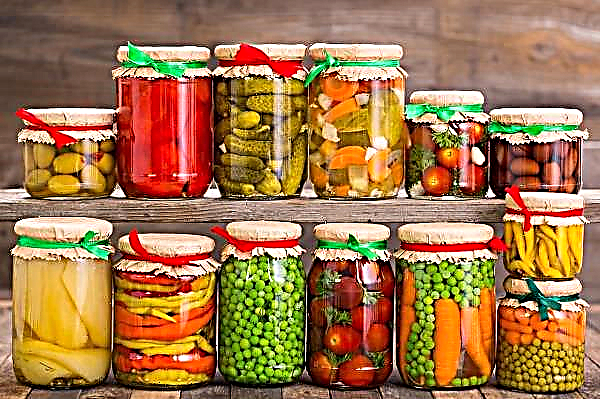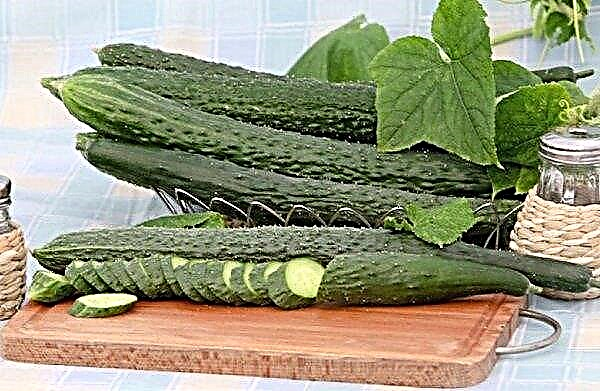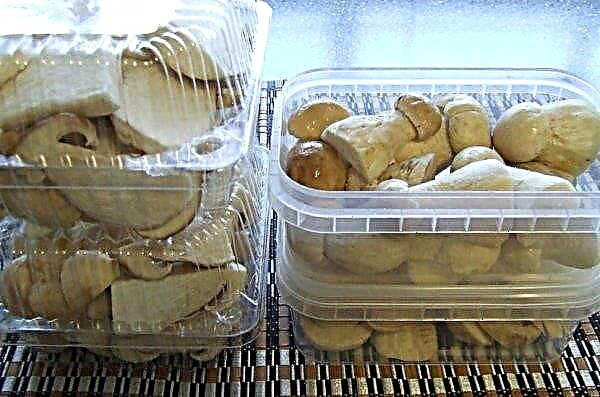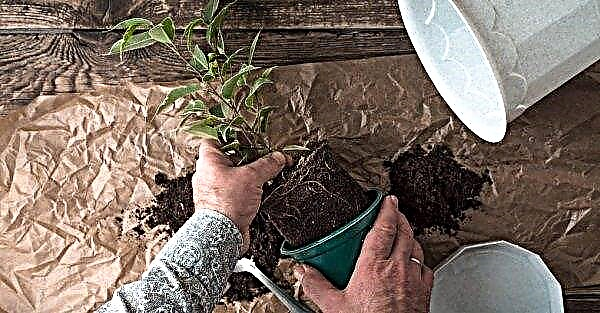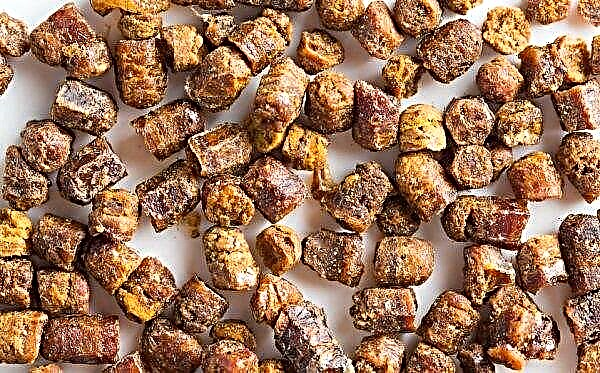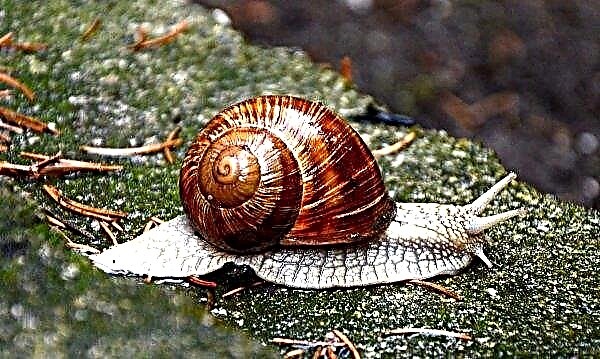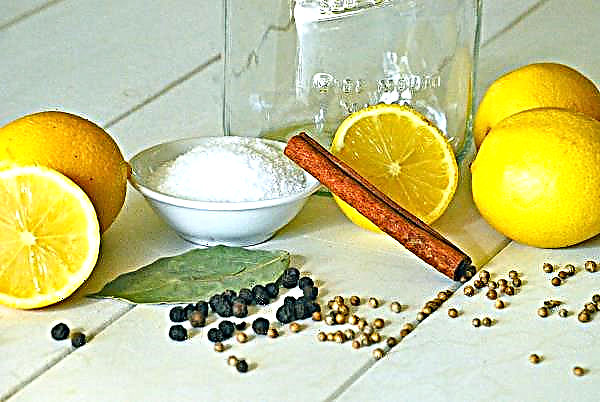The conservation of sweet pepper often destroys its rare and unique taste, and with it its beneficial properties for the body. That is why many resort to a more gentle way of conservation - freezing. Next, we will consider the main subtleties of preparing pepper for freezing, as well as the main secrets of its savings in the freezer throughout the winter.
Did you know? Sweet pepper first appeared in Europe in the 15th century, thanks to the expeditions of Christopher Columbus. However, in South America, it was successfully cultivated by the Indians from the II century BC. e.
Selection and preparation of pepper
The most important thing when harvesting any vegetable for the winter is the choice of a quality and suitable fruit for this. It should be moderately ripe, and also deprived of all kinds of pathologies, including traces of lesions by various infections and parasites. Otherwise, the duration of storage of frozen billets is reduced significantly, and their taste dramatically loses its richness and variety. The first thing you should pay attention to when buying a vegetable is its “gender”. Vegetable growers distinguish between male and female fruits. Despite the external similarity, they have different taste shades, which will directly affect the further taste of the dishes. Female fruits are sweeter and also have a much softer and more watery structure than male ones. Men are dense, dry, therefore ideal for prolonged freezing. It is not difficult to distinguish the sex of pepper, male specimens are slightly elongated, and their lower part has practically no bulges. Females are short and rounded, with a distinct bulge on the lower edge.
Despite the external similarity, they have different taste shades, which will directly affect the further taste of the dishes. Female fruits are sweeter and also have a much softer and more watery structure than male ones. Men are dense, dry, therefore ideal for prolonged freezing. It is not difficult to distinguish the sex of pepper, male specimens are slightly elongated, and their lower part has practically no bulges. Females are short and rounded, with a distinct bulge on the lower edge.
In addition, a quality vegetable:
- must be weighty;
- not have spots, holes or putrefactive inclusions;
- differ in a uniform, saturated color;
- should have a dense leg, a bright green tint.
To prepare the fruits for freezing, you need to resort to the following procedures:
- Wash them thoroughly under cold running water.
- Arrange the fruits on a terry towel to dry or wipe with paper towels.
- Use a sharp knife to remove the stalk, core and internal partitions.
- If necessary, wash the peeled vegetable under running water and dry naturally.
Important! If you start processing fruits not earlier than 2-3 days after purchase, be sure to store them in the refrigerator freely, without a plastic bag. Otherwise, they may fade.
The best frozen pepper recipes
Frozen peppers are the best preparation for meat and vegetable dishes. With its help, you can successfully supplement any table, as well as provide the winter diet with a whole complex of all kinds of vitamins and minerals. However, not every housewife can qualitatively prepare a vegetable, which reduces the appetite of dishes prepared from it at times. Therefore, really successful methods of harvesting pepper will be considered below.
Entirely for stuffing
This is the easiest way to preserve the aromatic fruit. In addition to the fact that it does not take a lot of time, a vegetable frozen in this way can subsequently become not only the basis for stuffing, but also be used for shredding, as well as other cooking.
To freeze a whole vegetable, you must:
- Pre-washed and peeled fruits dry well at room temperature.
- Lay them on a kitchen board or other kitchen surface and send them to the freezer for 24 hours. Peppers should not touch, otherwise they may stick together during cooling.
- After a day of freezing, pull the fruits out of the freezer and wrap them with cling film.
- Fold the blanks wrapped in cling film into pyramids of several pieces and send back to the freeze.
In pieces
This method is ideal for all fast food enthusiasts. With its help, a fragrant vegetable can be instantly removed from the freezer and included in any cooking process. In addition, chopped fruits take up several times less space than whole ones, so this method will help save the space of the freezer for harvesting other vegetable crops for the winter.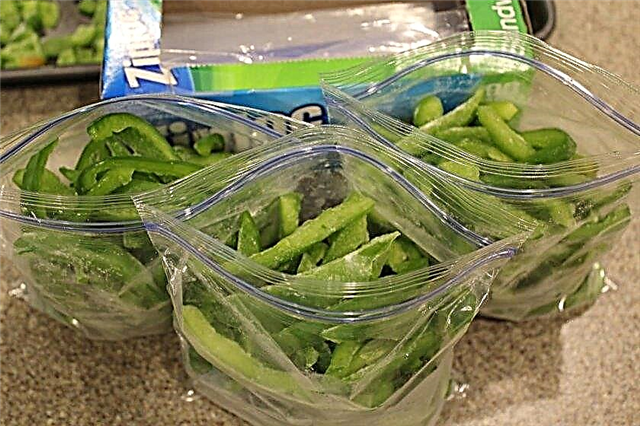
Peppers are prepared for freezing as follows:
- Washed and peeled fruits need to be chopped in cubes, straws or other convenient way.
- Shredded vegetables should be distributed on a kitchen board or other kitchen surface in one layer, and slightly dried at room temperature.
- Next, the chopped vegetable is placed in small plastic bags, and then sent to the freezer, for permanent storage.
Important! The form of slicing should correspond to the further culinary purpose of peppers. For salads and soups it needs to be chopped with straws, for stews and other dishes - in cubes.
Baked bell peppers
Baked vegetable from the freezer will be the best product for the winter table, which can become a separate dish, a side dish for meat or a flavorful ingredient for soups, stews, etc. An undoubted plus of such a workpiece is that it undergoes a complete heat treatment before cooling, and this makes it possible to store it not only in the freezer, but also in the refrigerator.
Baked bell peppers for freezing are prepared as follows:
- Wash and dry the fruits with a paper towel.
- Put the unpeeled vegetable (along with the stalk and seeds) on a well-greased baking sheet with vegetable oil.
- Send it baked in the oven at 180 ° C for 30–40 minutes.
- Remove the baked vegetable from the oven, put it in a small saucepan, cover and let stand until it cools (about 15–20 minutes).
- Transfer the fruits to a flat surface, and then peel them from the peel, peduncle and seeds.
- Place the peppers in glass jars or small plastic containers and pour the juice formed in the pan.
- Transfer peppers to a refrigerator or freezer.
Stuffed peppers
Such a preparation is best for lovers of fragrant stuffed peppers. Besides the fact that it helps to preserve the freshness and rich taste of fruits for a long time, with its help you can perfectly prepare for uninvited guests. Such peppers can be instantly thawed and in just half an hour to cook a hearty and tasty dish.
To prepare preparations from stuffed peppers you need:
- Wash the fruits, and then eliminate the stalks and entrails.
- Prepare the filling for the dish (meat, hard cheese, etc., to choose from). A raw and ready-made filling is suitable for stuffing, but raw is more preferable, since in this case the dish slowly loses aroma and taste during storage.
- Tamp the stuffing into the peppers, and then lay them on the kitchen board.
- Send stuffed vegetables to the freezer for 24 hours.
- After the workpieces have hardened, they must be removed from the refrigerator, put in a general package and sent to the freezer for further storage.
Important! So that after thawing the pepper was tender and easily amenable to heat treatment, it must be dipped in boiling water for 1-2 minutes.
Optimal conditions and shelf life
The best conditions for storing frozen vegetables are considered to be –19 ...– 30 ° С. At the same time, shock freezing, which helps to maintain twisting, density and juiciness, is best for their safety. Subject to the optimal temperature regime, the workpieces are able to be stored throughout the year, until a new crop. However, baked peppers, when stored in a refrigerator at 0 ... + 5 ° C, are stored less, no more than a few weeks.
How to defrost pepper
Most often semi-finished foods are thawed naturally, at room temperature. If you want to speed up the process, you can fill them with cold or warmed up to room temperature water. At the same time, it is forbidden to use hot water or boiling water, a sharp temperature difference can damage the structure of the vegetable and the taste of the workpieces.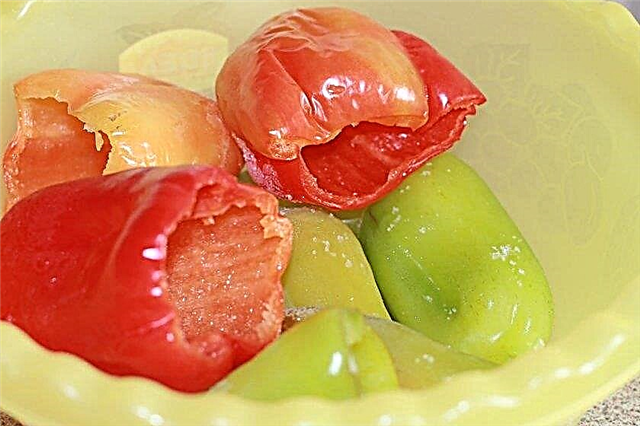 But, if you do not like to wait or guests suddenly come to you, you can defrost a vegetable using the express technique. To do this, it is slowly heated in a microwave oven, in the “quick defrost” mode or at a minimum power of no more than 5-10 minutes.
But, if you do not like to wait or guests suddenly come to you, you can defrost a vegetable using the express technique. To do this, it is slowly heated in a microwave oven, in the “quick defrost” mode or at a minimum power of no more than 5-10 minutes.
What can be made from frozen pepper
The most harmonious sweet pepper from the freezer looks in the following dishes:
- lean vegetable soup;
- borscht;
- lamb shulum;
- lecho;
- Asian salad, with chicken and vegetables;
- homemade ketchup;
- fried peppers with garlic and herbs;
- stuffed peppers with rice garnish;
- ratatouille;
- pepper rings stuffed with cream cheese;
- lagman with chicken and vegetables;
- vegetable stew;
- fried pepper salad with garlic and fresh parsley;
- sauteed vegetables;
- ajapsandali;
- ayvar;
- chisanchi;
- baked chicken breasts with vegetables;
- peppers stuffed with feta cheese.
Did you know? The prefix “Bulgarian” to the name of sweet pepper in Russian arose at the end of the 17th century. At this time, immigrants from Bulgaria brought the first seeds of culture to the Russian Empire, which by that time was quite widespread in the Balkans, but unknown in the territory of Russia.
Frozen peppers are an ideal preparation for the winter for festive and everyday dishes. With its help, you can save all useful substances and vitamins in a vegetable, as well as a pleasant and delicate aroma. But, in order for the vegetable not to lose its juiciness and be preserved for a long time, it must not only be prepared for prolonged freezing, but also kept at a temperature of at least –20 ° С.


